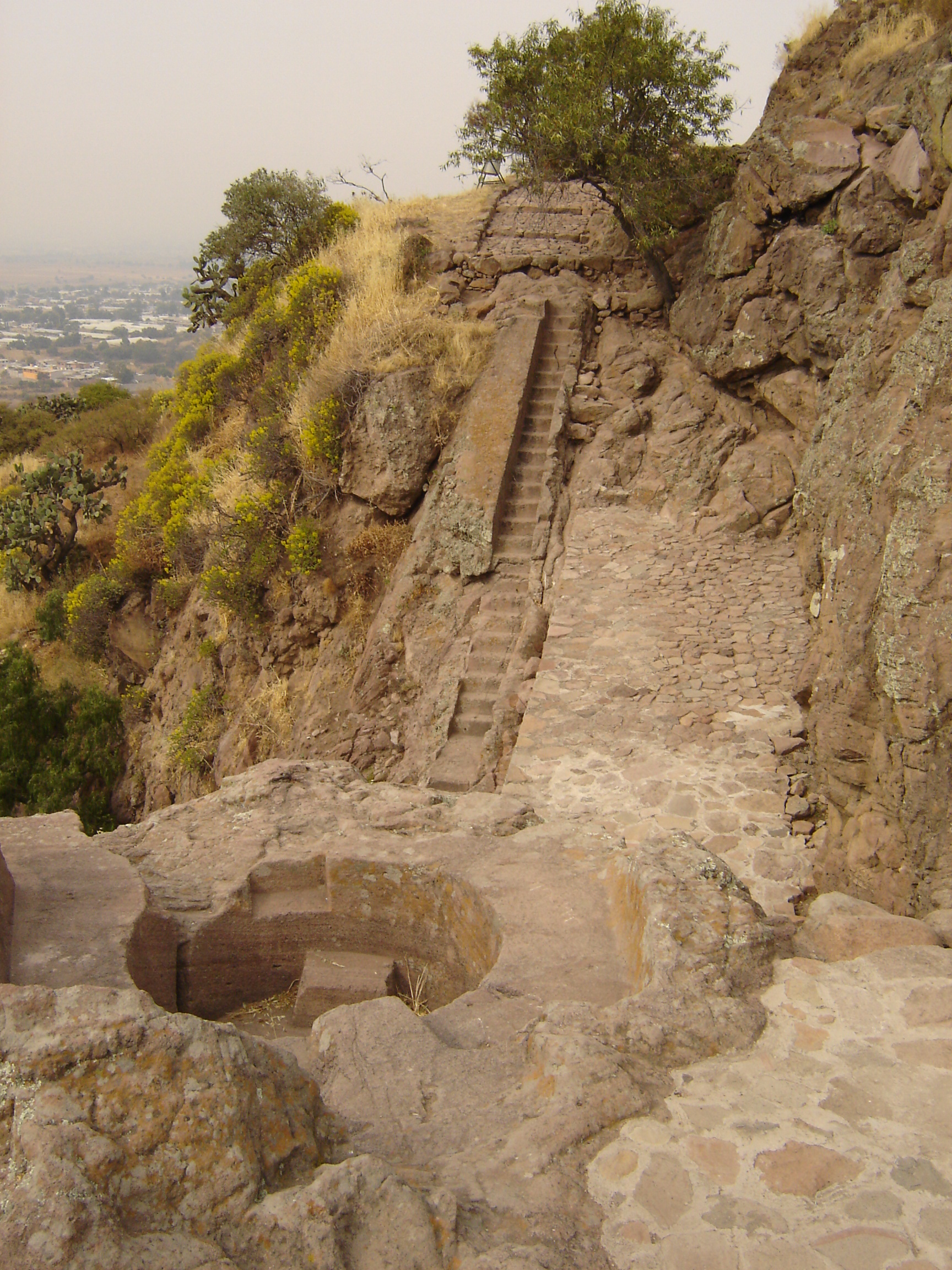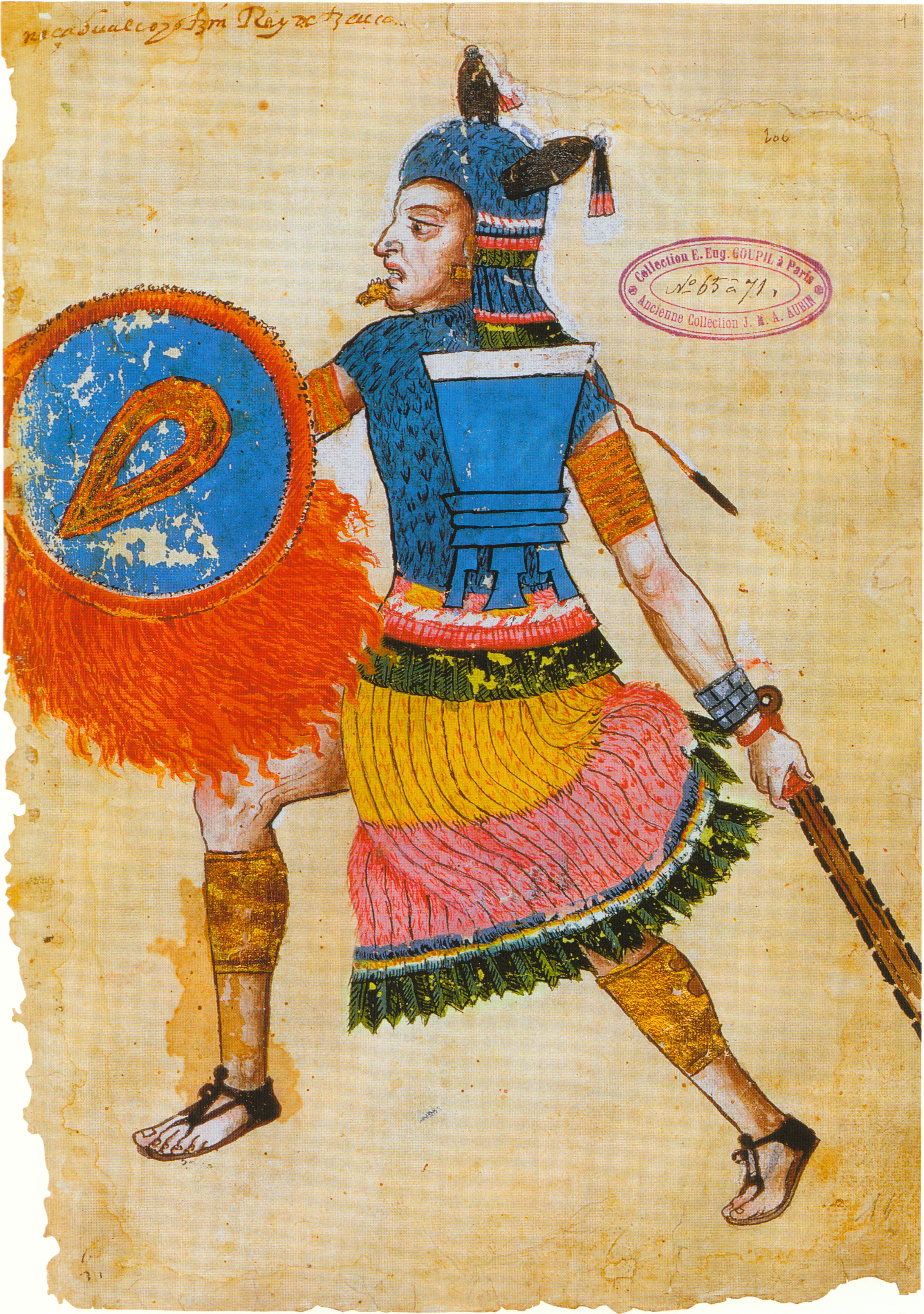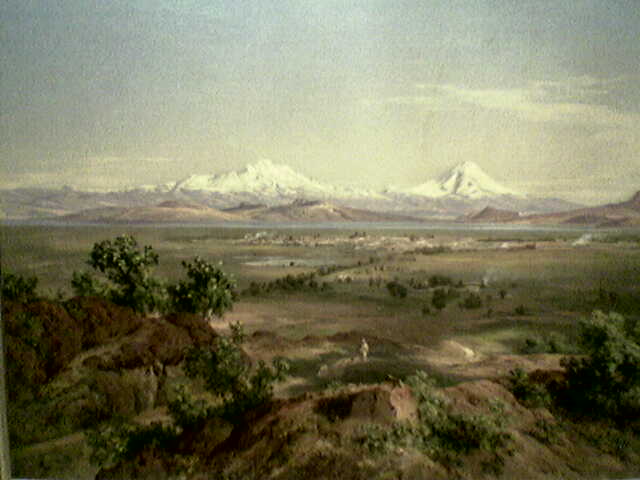|
Azcasuch
Azcasuch ( nci-IPA, Āzcaxōch, aːsˈkaʃoːtʃ) was a '' cihuatlatoani'' ( queen) of the pre-Columbian Acolhua '' altepetl'' of Tepetlaoztoc in the Valley of Mexico. Her name is Nahuatl Nahuatl (; ), Aztec, or Mexicano is a language or, by some definitions, a group of languages of the Uto-Aztecan language family. Varieties of Nahuatl are spoken by about Nahua peoples, most of whom live mainly in Central Mexico and have smaller ... for a kind of a flower (literally "ant-flower"). A daughter of Nezahualcoyotl, ruler of Texoco, Azcasuch married Cocopin, the ruler of Tepetlaoztoc. After her husband's death, she ascended to the throne herself as queen regnant. Azcasuch was succeeded by her grandson, Diego Tlilpotonqui. References * Year of birth missing Year of death missing Cihuatlatoque 16th-century women rulers {{royal-stub ... [...More Info...] [...Related Items...] OR: [Wikipedia] [Google] [Baidu] |
Diego Tlilpotonqui
Don Diego Tlilpotonqui was the '' tlatoani'' ("ruler" or "king") of the pre-Columbian Acolhua '' altepetl'' (ethnic state) of Tepetlaoztoc in the Valley of Mexico. He was ruling Tepetlaoztoc when the Spanish arrived in 1519. Tlilpotonqui was the grandson of Cocopin, who had previously been ruler of Tepetlaoztoc. Upon Cocopin's death, his wife Azcasuch, a daughter of Nezahualcoyotl, the ruler of Texcoco, succeeded him as ''cihuatlatoani'' ( queen regnant). After Azcasuch's death, the position became Tlilpotonqui's. With his conversion to Christianity, Tlilpotonqui was baptized Baptism (from grc-x-koine, βάπτισμα, váptisma) is a form of ritual purification—a characteristic of many religions throughout time and geography. In Christianity, it is a Christian sacrament of initiation and adoption, almost ... and given the Spanish name Diego. Tlilpotonqui left no legitimate children. Upon his death, his nephew Don Luis de Tejada became ''tlatoani''. R ... [...More Info...] [...Related Items...] OR: [Wikipedia] [Google] [Baidu] |
Cihuatlatoani
''Tlatoani'' ( , "one who speaks, ruler"; plural ' or tlatoque) is the Classical Nahuatl term for the ruler of an , a pre-Hispanic state. It is the noun form of the verb "tlahtoa" meaning "speak, command, rule". As a result, it has been variously translated in English as "king", "ruler", or "speaker" in the political sense. Above a tlahtoani is the ''Weyi Tlahtoani,'' sometimes translated as "Great Speaker", though more usually as " Emperor" (the term is often seen as the equivalent to the European " great king"). A ' () is a female ruler, or queen regnant. The term refers to "vice-leader". The leaders of the Mexica prior to their settlement are sometimes referred to as , as well as colonial rulers who were not descended from the ruling dynasty. The ruler's lands were called , and the ruler's house was called ''Nahuatl dictionary'' (1997). Wired humanities project. Retrieved January 1, 2012, frolink/ref> The city-states of the Aztec Empire each had their own tlatoani, or ... [...More Info...] [...Related Items...] OR: [Wikipedia] [Google] [Baidu] |
Texcoco (altepetl)
Tetzcoco (Classical Nahuatl: ''Tetzco(h)co'' ) was a major Acolhua altepetl (city-state) in the central Mexican plateau region of Mesoamerica during the Late Postclassic period of pre-Columbian Mesoamerican chronology. It was situated on the eastern bank of Lake Texcoco in the Valley of Mexico, to the northeast of the Aztec capital, Tenochtitlan. The site of pre-Columbian Tetzcoco is now subsumed by the modern Mexican ''municipio'' of Texcoco and its major settlement, the city formally known as Texcoco de Mora. It also lies within the greater metropolitan area of Mexico City. Pre-Columbian Tetzcoco is most noted for its membership in the Aztec Triple Alliance. At the time of the Spanish conquest of the Aztec Empire, it was one of the largest and most prestigious cities in central Mexico, second only to the Aztec capital, Tenochtitlan. A survey of Mesoamerican cities estimated that pre-conquest Tetzcoco had a population of 24,000+ and occupied an area of 450 hectares. The ... [...More Info...] [...Related Items...] OR: [Wikipedia] [Google] [Baidu] |
Year Of Death Missing
A year or annus is the orbital period of a planetary body, for example, the Earth, moving in its orbit around the Sun. Due to the Earth's axial tilt, the course of a year sees the passing of the seasons, marked by change in weather, the hours of daylight, and, consequently, vegetation and soil fertility. In temperate and subpolar regions around the planet, four seasons are generally recognized: spring, summer, autumn and winter. In tropical and subtropical regions, several geographical sectors do not present defined seasons; but in the seasonal tropics, the annual wet and dry seasons are recognized and tracked. A calendar year is an approximation of the number of days of the Earth's orbital period, as counted in a given calendar. The Gregorian calendar, or modern calendar, presents its calendar year to be either a common year of 365 days or a leap year of 366 days, as do the Julian calendars. For the Gregorian calendar, the average length of the calendar year (the me ... [...More Info...] [...Related Items...] OR: [Wikipedia] [Google] [Baidu] |
Year Of Birth Missing
A year or annus is the orbital period of a planetary body, for example, the Earth, moving in its orbit around the Sun. Due to the Earth's axial tilt, the course of a year sees the passing of the seasons, marked by change in weather, the hours of daylight, and, consequently, vegetation and soil fertility. In temperate and subpolar regions around the planet, four seasons are generally recognized: spring, summer, autumn and winter. In tropical and subtropical regions, several geographical sectors do not present defined seasons; but in the seasonal tropics, the annual wet and dry seasons are recognized and tracked. A calendar year is an approximation of the number of days of the Earth's orbital period, as counted in a given calendar. The Gregorian calendar, or modern calendar, presents its calendar year to be either a common year of 365 days or a leap year of 366 days, as do the Julian calendars. For the Gregorian calendar, the average length of the calendar year (the mea ... [...More Info...] [...Related Items...] OR: [Wikipedia] [Google] [Baidu] |
Tlatoani
''Tlatoani'' ( , "one who speaks, ruler"; plural ' or tlatoque) is the Classical Nahuatl term for the ruler of an , a pre-Hispanic state. It is the noun form of the verb "tlahtoa" meaning "speak, command, rule". As a result, it has been variously translated in English as "king", "ruler", or "speaker" in the political sense. Above a tlahtoani is the ''Weyi Tlahtoani,'' sometimes translated as "Great Speaker", though more usually as "Emperor" (the term is often seen as the equivalent to the European "great king"). A ' () is a female ruler, or queen regnant. The term refers to "vice-leader". The leaders of the Mexica prior to their settlement are sometimes referred to as , as well as colonial rulers who were not descended from the ruling dynasty. The ruler's lands were called , and the ruler's house was called ''Nahuatl dictionary'' (1997). Wired humanities project. Retrieved January 1, 2012, frolink/ref> The city-states of the Aztec Empire each had their own tlatoani, or l ... [...More Info...] [...Related Items...] OR: [Wikipedia] [Google] [Baidu] |
Queen Regnant
A queen regnant (plural: queens regnant) is a female monarch, equivalent in rank and title to a king, who reigns ''suo jure'' (in her own right) over a realm known as a "kingdom"; as opposed to a queen consort, who is the wife of a reigning king; or a queen regent, who is the guardian of a child monarch and rules '' pro tempore'' in the child's stead, be it in sharing power or in ruling alone. She is sometimes called a woman king. A princess regnant is a female monarch who reigns ''suo jure'' over a " principality"; an empress regnant is a female monarch who reigns ''suo jure'' over an "empire". A queen regnant possesses and exercises sovereign powers, whereas a queen consort or queen regent shares her spouse's and/or child's rank and titles but does not share the sovereignty of her spouse or child. The husband of a queen regnant traditionally does not share the queen regnant's rank, title, or sovereignty. However, the concept of a king consort or prince consort is not ... [...More Info...] [...Related Items...] OR: [Wikipedia] [Google] [Baidu] |
Nezahualcoyotl (tlatoani)
Nezahualcoyotl ( nci, Nezahualcoyōtl , ) (April 28, 1402 – June 4, 1472) was a scholar, philosopher (tlamatini), warrior, architect, poet and ruler (''tlatoani'') of the city-state of Texcoco in pre-Columbian era Mexico. Unlike other high-profile Mexican figures from the century preceding Spanish conquest of the Aztec Empire, Nezahualcoyotl was not fully Mexica; his father's people were the Acolhua, another Nahuan people settled in the eastern part of the Valley of Mexico, on the coast of Lake Texcoco. His mother, however, was the sister of Chimalpopoca, the Mexica king of Tenochtitlan. He is best remembered for his poetry, but according to accounts by his descendants and biographers, Fernando de Alva Cortés Ixtlilxóchitl and Juan Bautista Pomar, he had an experience of an "Unknown, Unknowable Lord of Everywhere" to whom he built an entirely empty temple in which no blood sacrifices of any kind were allowed — not even those of animals. However, he allowed human sacrifices ... [...More Info...] [...Related Items...] OR: [Wikipedia] [Google] [Baidu] |
Queen Regnant
A queen regnant (plural: queens regnant) is a female monarch, equivalent in rank and title to a king, who reigns ''suo jure'' (in her own right) over a realm known as a "kingdom"; as opposed to a queen consort, who is the wife of a reigning king; or a queen regent, who is the guardian of a child monarch and rules '' pro tempore'' in the child's stead, be it in sharing power or in ruling alone. She is sometimes called a woman king. A princess regnant is a female monarch who reigns ''suo jure'' over a " principality"; an empress regnant is a female monarch who reigns ''suo jure'' over an "empire". A queen regnant possesses and exercises sovereign powers, whereas a queen consort or queen regent shares her spouse's and/or child's rank and titles but does not share the sovereignty of her spouse or child. The husband of a queen regnant traditionally does not share the queen regnant's rank, title, or sovereignty. However, the concept of a king consort or prince consort is not ... [...More Info...] [...Related Items...] OR: [Wikipedia] [Google] [Baidu] |
Nahuatl
Nahuatl (; ), Aztec, or Mexicano is a language or, by some definitions, a group of languages of the Uto-Aztecan language family. Varieties of Nahuatl are spoken by about Nahua peoples, most of whom live mainly in Central Mexico and have smaller populations in the United States. Nahuatl has been spoken in central Mexico since at least the seventh century CE. It was the language of the Aztec/ Mexica, who dominated what is now central Mexico during the Late Postclassic period of Mesoamerican history. During the centuries preceding the Spanish and Tlaxcalan conquest of the Aztec Empire, the Aztecs had expanded to incorporate a large part of central Mexico. Their influence caused the variety of Nahuatl spoken by the residents of Tenochtitlan to become a prestige language in Mesoamerica. After the conquest, when Spanish colonists and missionaries introduced the Latin alphabet, Nahuatl also became a literary language. Many chronicles, grammars, works of poetry, administrative docu ... [...More Info...] [...Related Items...] OR: [Wikipedia] [Google] [Baidu] |
Valley Of Mexico
The Valley of Mexico ( es, Valle de México) is a highlands plateau in central Mexico roughly coterminous with present-day Mexico City and the eastern half of the State of Mexico. Surrounded by mountains and volcanoes, the Valley of Mexico was a centre for several pre-Columbian civilizations, including Teotihuacan, the Toltec, and the Aztec. The ancient Aztec term ('Land Between the Waters') and the phrase Basin of Mexico are both used at times to refer to the Valley of Mexico. The Basin of Mexico became a well known site that epitomized the scene of early Classic Mesoamerican cultural development as well. The Valley of Mexico is located in the Trans-Mexican Volcanic Belt. The valley contains most of the Greater Mexico City, Mexico City Metropolitan Area, as well as parts of the State of Mexico, Hidalgo (state), Hidalgo, Tlaxcala, and Puebla. The Basin of Mexico covers approximately in the NNE-SSW direction with length to width dimensions of approximately to The Valley of ... [...More Info...] [...Related Items...] OR: [Wikipedia] [Google] [Baidu] |




.jpg)

